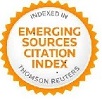History, Rhetoric and the Fictionalization of History: The King Pap of Armenia Episode (AM, Res gestae 27.12.9-30.1)
Keywords:
History, Rhetoric, Fictionalization of history, Drama, Ammianus, Pap of ArmeniaAbstract
What we analyse in the king Pap of Armenia episode is how Ammianus describesa complex political and religious background, by using a rhetorical approach and a very varied narrative and dramatic register: a fictional plot, full of adventures, theatrical and dramatic, diversein its staging and striking and impressive in its details. The fictionalization of the account and the use of the rhetoric, aided by many contrasts, ominous prolepses, defined characterizations, theatrical re-enactments, and details (rather than facts) which converge to make a banal historical reality but one that is attractive for the reader, will mask a historical truth, but they serve the ultimate aim of the historian: the decadence of Romewas not only due to Adrianopolis, but to the loss of the moral values. In sum, a good example of fictionalized history.
Downloads
References
ALONSO NUÑEZ, J.M. (1975), La visión historiográfica de Amiano Marcelino, Valladolid: Universidad, Departamento de Prehistoria y Arqueología.
BARNES, T.D. (1998), A.Marcellinus and the Representation of Historical Reality, Ithaca and London: Cornell University Press
BARTHES, R. (1993-1994), “Tácite et le baroque funèbre”, Oeuvres complétesMarty, É. (ed.), Paris: Ed. du Seuil, I, 1247-9
BOEFT DEN, J., DRIJVERS, J.W., DEN HENGST, D., TEITLER, H.C.(eds.) (2009), Philological and Historical Commentary on A. Marcellinus XXVII,Leiden-Boston: Brill.
COMBERM.(1997), “Re-reading the Roman Historians”, Companion to Historiography, ed. M. Bentley, 1st ed., London-N. York: Routledge: 38-52.
CONTE, G. B., BARCHIESI, A.(1989), “Imitazione e arte allusiva. Modi e funzioni dell’ Intertestualità, in La produzione del testo. Lo spazio letterario di Roma Antica, G. Cavallo-P. Fedeli, A. Giardina (eds.), (s.l.), Ed. Salerno
DINTER, M.(2012), AnatomizingCivil War: studies in Lucan's Epic Technique, Michigan: Michigan Univ. Press.
FELDHERR, A.(1998), Spectacle and Society in Livy's History, Berkeley: Univ. of California Press
FRANÇOIS. P. (2012), “Iuvit locus. L’entrelacemente du narratif et du descriptiv dans le récit historique”, in La trame et le tableau. Recit and Description. Poétiques et Rhétoriques du récit et de la description dans l’Antiquité grecque et latine, M. Briand (ed.), Rennes: Pres. Univ., 115-138.
GABBA, E. (1981), “True History and False History in Classical Antiquity”, Journal of Roman Studies 71, 50-62.
GENETTE, G. (1989) (=1972), Figuras III, Barcelona: Lumen.
KELLY, G. (2008), A. Marcellinus. The Allusive Historian, Cambridge/New York: CambridgeUniv. Press.
KONSTAN, D.(2007), “La piedad divina desde el paganismo al cristianismo”, Auster 12, 11-23
____ (2001), Pity Transformed, London: Duckworth.
LIGOTA, C. R. (1982),“‘This story is not true’. Fact and Fiction in Antiquity”, Journal of the Warburg and Courtland Institutes, 45, 1-13
MARTIN, R., GAILLARD, J.(1981), Les genres littéraires à Rome,I, Paris: Scodel.
MATTHEWS, J. F.(1989), The Roman Empire of Ammianus Marcellinus. Baltimore: The Johns Hopkins Univ. Press.
MORGAN, J.R. (2011), “Fiction and History: Historiography and the novel”, in A Companion to Greek and Roman Historiography, J. Marincola (ed.), II, 553-564
MORENO FERRERO, I. (2013), “La inversión del binomio «sentimientos romanos-pasiones bárbaras» en la historiografía del s. IV”, in El espejismo del bárbaro. Ciudadanos y extranjeros al final de la Antigüedad, David Álvarez Jiménez, Rosa Sanz Serrano & David Hernández de la Fuente (eds.), Castellón: Univ. Jaume I, 19-44.
NERI, V. (1992), “Ammianus’ definition of Christianity as absoluta et simplex religio”, J. den Boeft, D. den Hengst and H.C. Teitler (eds.), in Cognitio Gestorum: The Historiographic Art of Ammianus Marcellinus, Amsterdam /Oxf. / N. York/ Tokyo, 59–65.
PITCHER, L. (2009), Writing Ancient History, An Introduction toClassical Historiography, N.York: I.B. Tauris. PONCET, A.(1969), “Reseña de Kl. Rosen, Studien zur Darstellungskunst und Glaubwürdigkeit des A. Marcellinus, Manheim, Diss. Heidelberg”, in Revue des Études Latines 47, 620-623.
REINHOLD, M. (1985), “HumanNature as Cause in Ancient Historiography”, in The Craft of the Ancient Historian. Essays in honor of Ch.G. Starr, J.W. Eadie-J. Oler (ed.), Lanham-N.York-London, 21-40
ROBERTS, M. (1989), The Jewelled Style: Poetry and Poetics in Late Antiquity, Ithaca-London, Cornell Univ. Press.
SABBAH, G. (1978), La méthode d’Ammien Marcellin: recherches sur la construction du discourse historique dans les Res Gestae, Paris: Les Belles Lettres
SMITH, R. (1999), “Telling Tales. Ammianus’ Narrative of the Persian Expedition of Julian”, in The Late Roman World and its historian. Interpreting A. Marcellinus, Drijvers, J.W., Hunt, D (ed.), London-N. York: Routledge, 89-104.
TODOROV, T. (1971), Poétique de la prose, Paris: Seuil.
— (1981), Introducción a la Literatura Fantástica, 2ª ed., Méjico, PRAEMIA s.a.
TOUGHER, Sh. (1999), “Ammianus and the Eunuchs”, in The Late Roman World and its Historian. Interpreting A. Marcellinus, Drijvers, J.W., Hunt, D (ed.), London-N. York: Routledge, 64-73.
WEBB, R.(1988), Ekphrasis, Imaginatio and Persuasionin Ancient Rhetorical Theory and Practice, Farnham-Burlington: Asgate
WESTON, A. (2005) (=1992), Las claves de la argumentación, Barcelona: Ariel.
ZANGARA, A.(2007), Voir l’histoire. Théories anciennes du récit historique IIes. A.J.-C. Après J.-C., Paris: Ed. De l’Ecole des Hautes Études en sciences sociales.












